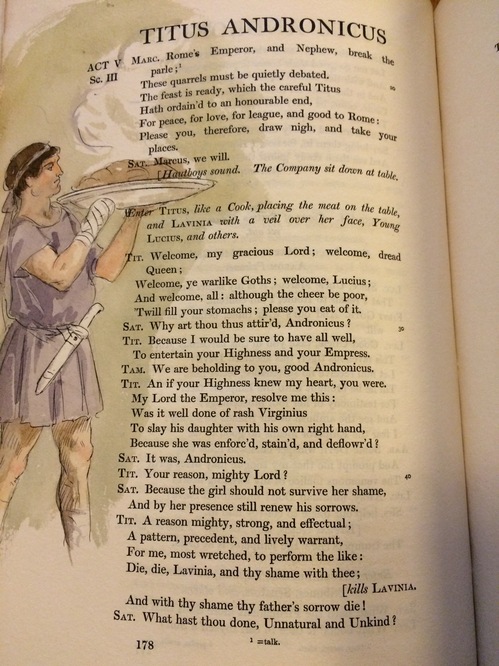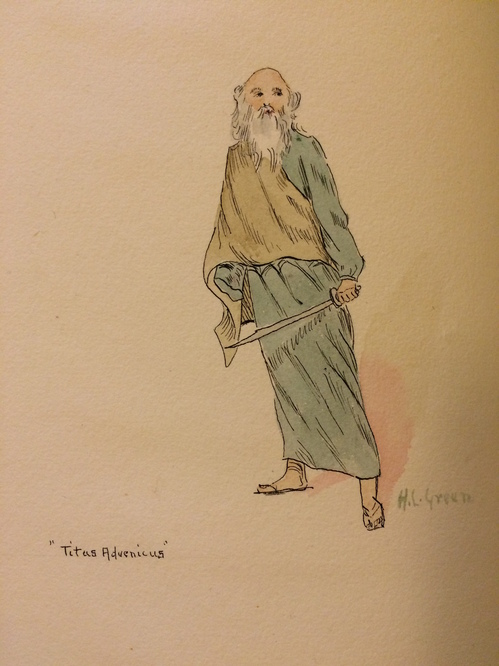Titus Andronicus is, frankly, often considered sub-par when compared to Shakespeare’s other works. It’s historically inconsistent and at times, the composition (plot, writing, characters) is clunky. Some of the characters’ actions seem far-fetched at times, and the play mixes several different periods of Roman history with little abandon or regard for the accuracy we see in later works.
But, I think we can cut this play a little slack in part because it was one of Shakespeare’s earliest plays, and because there is something to be said for its shock value. I’m not just referring to the general gore and possible insanity of some of the characters, either. I’m talking about the ending of the play. Unlike, say, Cymbeline, A Winter’s Tale, or even Pericles, where I was able to predict part of the end (a happy ending where lovers were reunited) based on the general set-up and act structure, I didn’t know what was going to happen in Titus Andronicus. I suspected murder, but not to the extent we see in the play.
Shakespeare’s contemporaries didn’t like this play, with some even doubting that the Bard himself wrote it. They excluded the play from the First Folio, though it later appeared in following publications. Titus fell out of favor (and performance) for hundreds of years. Recently (think mid 1900s), though, it has seen a resurgence, perhaps due to our increasing cultural fondness for violent media like the shows Hannibal and Dexter. I think it’s fascinating to see increased representation of the play, which brings me to the image below.

Here, we see Titus (missing a hand), carrying a platter of food, fresh out of the oven, to his diners. The dish is a revenge specialty: meat pie. But this is not just any kind of meat. Titus has made his daughter’s rapists into dinner. Not only does Titus murder the Queen of the Goths’s two sons, he has his daughter watch. At his dinner party, Titus serves the son-pies to Tamora herself (along with the rest of the diners). After seeing Tamora partake of his twisted confection, Titus reveals his secret recipe, sparking an all-out brawl. It ends in a bloodbath, with nearly everyone dead.
What I find interesting about this image is that it carries (at least) two interpretations, one for the knowledgeable reader and another for an uninformed peruser of the book itself. To the latter, this image of Titus may seem innocent and possibly even friendly. It looks like a battle-scarred Roman is taking dinner to his friends or family. Nothing scary there. But when you know the story, the tension builds. Since we see the moment before everything explodes, readers may feel a sense of anxiety, suspense, and/or dread. Since we know what’s coming, we may read Titus as mentally unhinged, murderous, or even grave instead of calm.
There is so much an image can do to augment a text. Even the decision to make Titus young in the Scripps edition influences how the reader sees him. Another portrait of Titus shows him as an old man (pictured below).

I’m not sure about you, but if this is how I saw Titus, I’d be even more shocked at his behavior, since I’d have a hard time imaging someone this fragile-looking would have the strength to brutally murderer two young men before killing his own daughter in the name of her purity and honor. I know he has the sword, but he seems so calm and soft (maybe it’s the light blue).
They say a rose by any other name would smell just as sweet. With that logic, a Titus in any other image would be just as violent, regardless of how jarring it may seem.